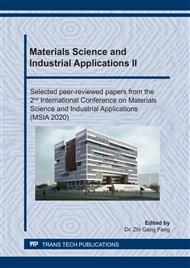p.181
p.191
p.196
p.202
p.207
p.212
p.219
p.224
p.229
Modeling of Annealing Heat Treatment Parameters for Zr Alloy Tube by ANN-Ga
Abstract:
In this paper, there are tow part of module for predicting the Annealing heat treatments of Zr tube. The artificial neural network (ANN) were used for relationship between mechanical property and annealing parameters. The genetic algorithm (GA) were used for Annealing heat treatments of Zr tube. The best ANN network architecture is 2-8-3, and the optimum values of momentum factor is 0.8 while the Crossover is also 0.8 by ANN-GA, which can be efficiently track the effect of annealing Heat treatment on properties for Zr-4 alloy. Keywords: Zr alloy, Heat Treatment, mechanical propert
Info:
Periodical:
Pages:
207-211
Citation:
Online since:
July 2020
Authors:
Keywords:
Price:
Сopyright:
© 2020 Trans Tech Publications Ltd. All Rights Reserved
Share:
Citation:


